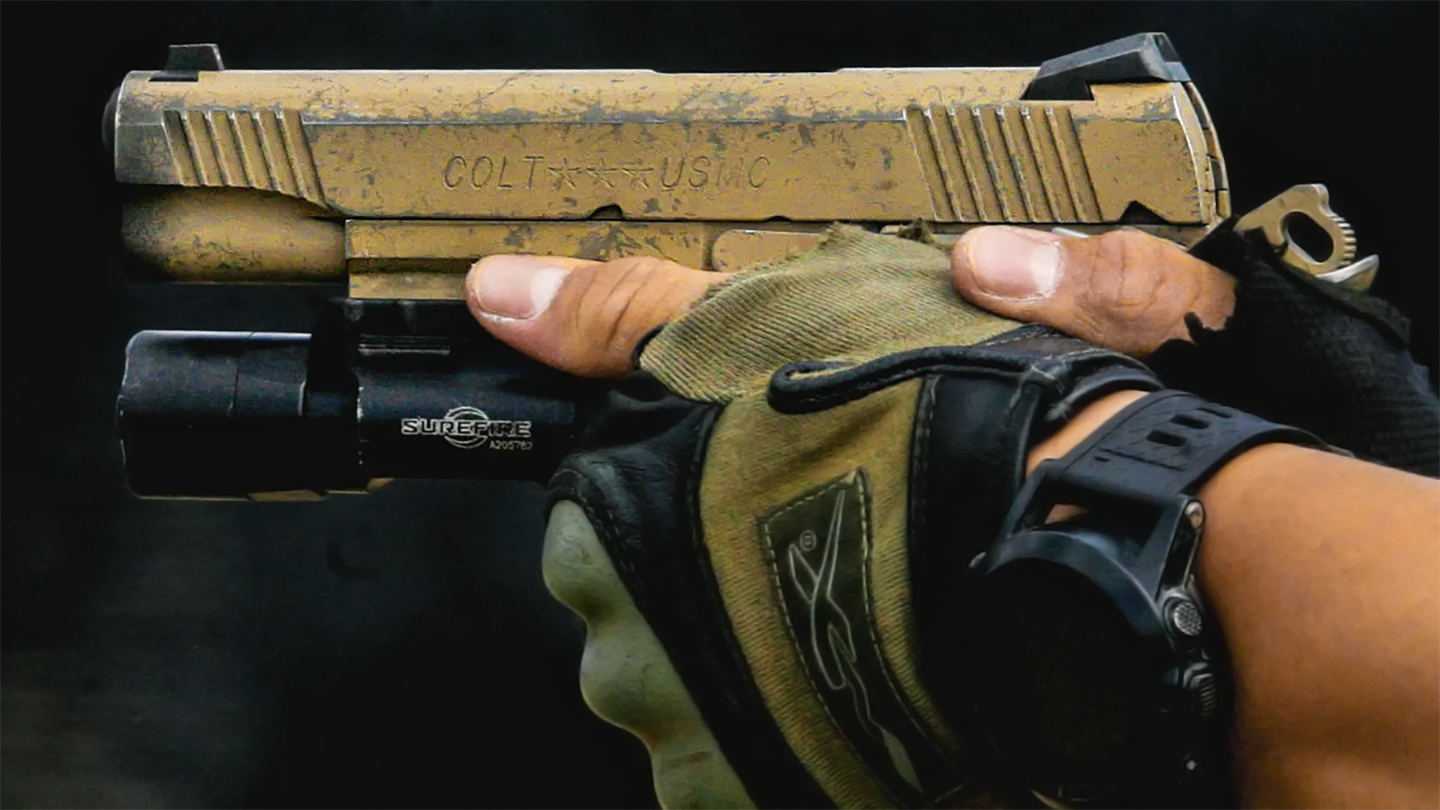The U.S. Marine Corps has removed the last of its .45 caliber M45A1 Close Quarters Battle Pistols from service. The M45A1s, which are heavily upgraded variants of the venerable Colt M1911, have now been replaced by 9x19mm M18 pistols. The Marines had been the last major American military user of M1911-series pistols, though other versions remain in increasingly limited service in the U.S. special operations community.
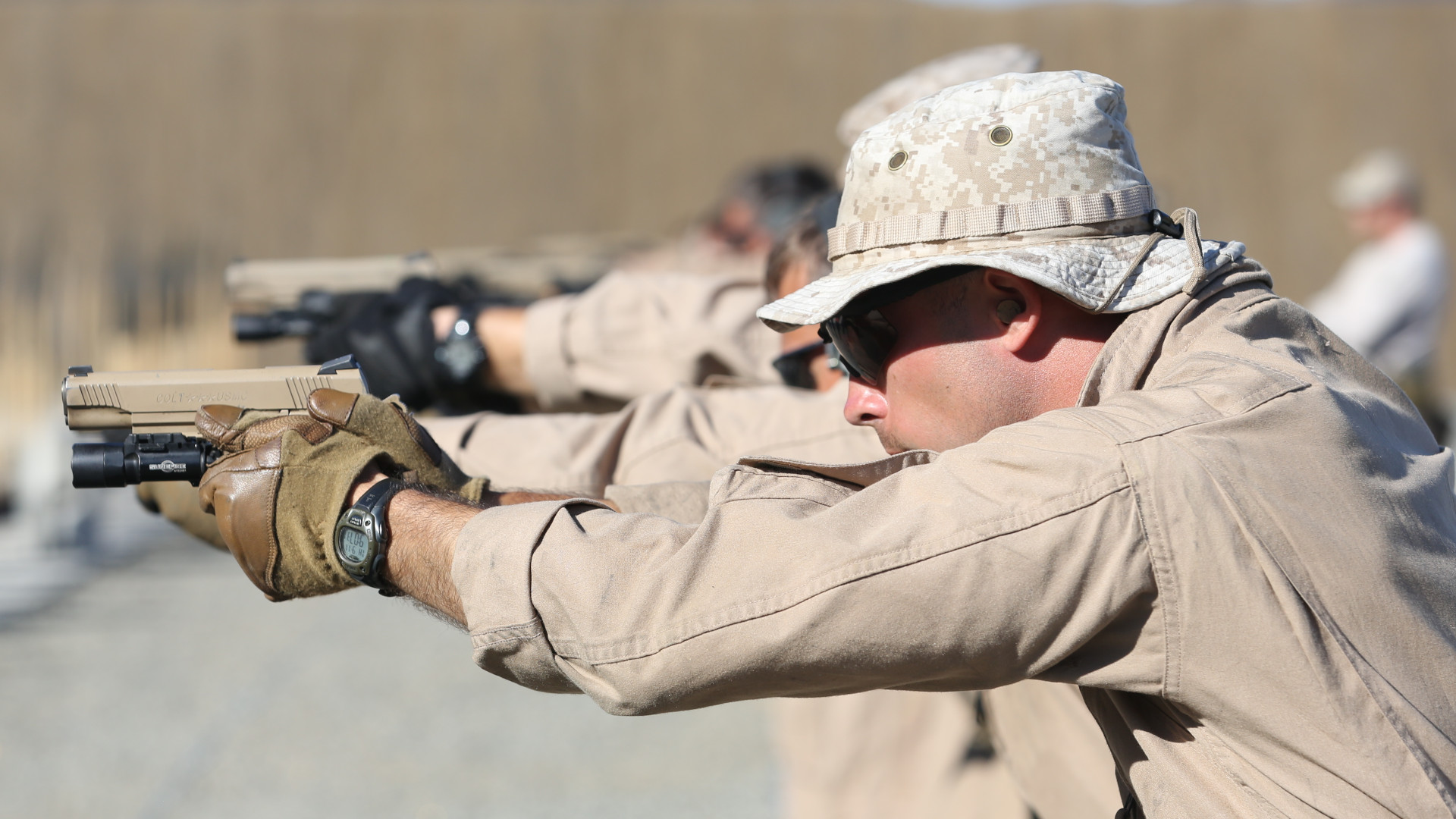
Marine Corps Systems Command (MARCORSYSCOM) confirmed to The War Zone that the replacement of the M45A1s with new M18s began last year and was completed by October 2022. M45A1s had previously been issued primarily to Marine special operations and reconnaissance units, as well as Special Reaction Teams assigned to the service’s Provost Marshal’s Office.

The service had announced its intention to replace all of its standard-issue sidearms with M18s in 2019. The M18 is the compact variant of the Sig Sauer Modular Handgun System pistol family, or MHS, which the U.S. Army first adopted in 2017 and is now becoming the default sidearm across much of the U.S. military. This includes the U.S. Air Force, where the M18 was also selected to replace the last of that service’s aging .38 caliber M15 revolvers, as well as other more modern pistols.
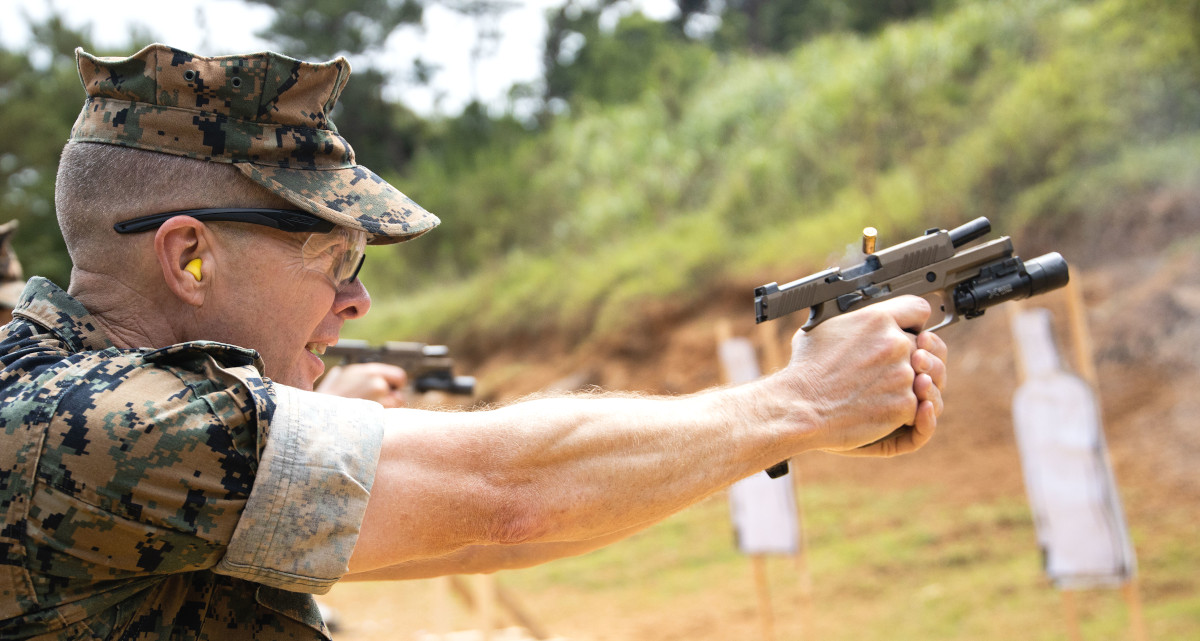
In addition to the M45A1, a number of different pistol options were available for Marines, depending on their job, as of 2019. The default sidearms for most units at the time were 9x19mm Beretta M9 and M9A1s. The Berettas had become the main sidearm U.S. military-wide in the 1980s.
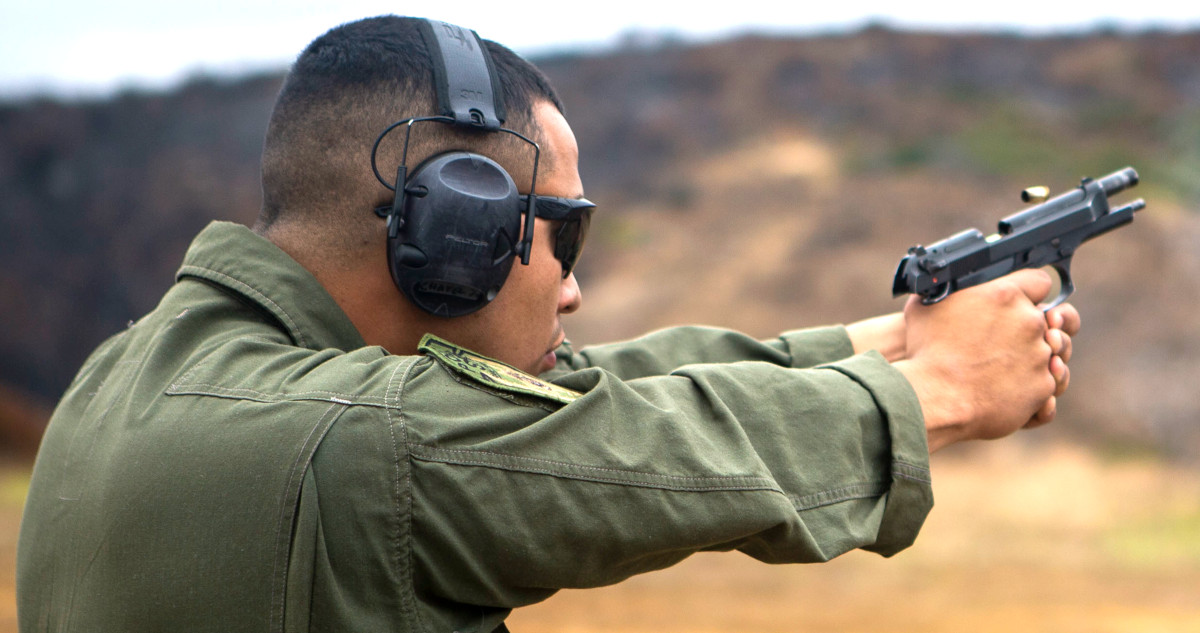
In 2019, the Corps also announced that it would be issuing 9x19mm Glock 19M pistols, designated M007s, to criminal investigative special agents and members of the service’s Marine Helicopter Squadron One (HMX-1). Among other things, HMX-1 is responsible for operating a fleet of helicopters, commonly referred to as Marine Ones, that are used to shuttle around the President and Vice President of the United States, members of their families, and other top officials. As part of that mission, the squadron also has a dedicated rapid-reaction force.

The origins of the M45A1 trace back to the introduction of the M9. The Army’s selection and introduction of the foreign-designed Beretta pistol as a replacement for the iconic American-made M1911A1 had been beset by technical issues, including dangerous slide failures that injured a number of individuals in testing, and other controversies.
The Army had adopted the original M1911 in 1911 and this was followed by the M1911A1, which featured a number of general refinements, in 1926. A core debate regarding the relative combat utility of the .45 caliber cartridge versus the 9x19mm round continues to this day. It is worth noting that an entirely new slate of 9x19mm cartridges, including modern hollow-point types, has come along with the adoption of the MHS family of pistols. It is widely argued that these cartridges negate the benefits of the .45 ACP and offer much greater capacity.
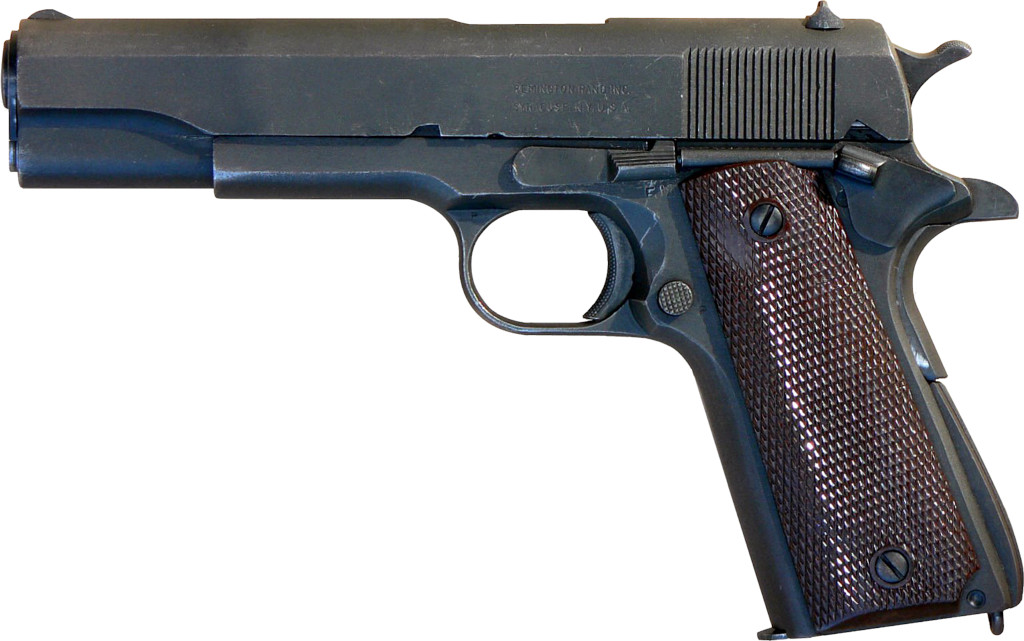
Though the Marines had officially adopted the M9 along with the rest of the U.S. military, the service also began issuing upgraded M1911A1 pistols in 1986. Marine Col. Robert Young, who also developed what is known as the service’s Enhanced Marksmanship Program (EMP), created the requirements for the resulting guns, which became known as Marine Expeditionary Unit (Special Operations Capable), or MEU(SOC), pistols.
The MEU(SOC) pistols were crafted in-house by the Precision Weapons Section of the Marine Corps Weapons Training Battalion at Marine Corps Base Quantico in Virginia. At a quick glance externally, these handguns look very similar to standard M1911A1s. However, they are almost completely rebuilt and Marine armors continued to tweak the designs for years afterward.
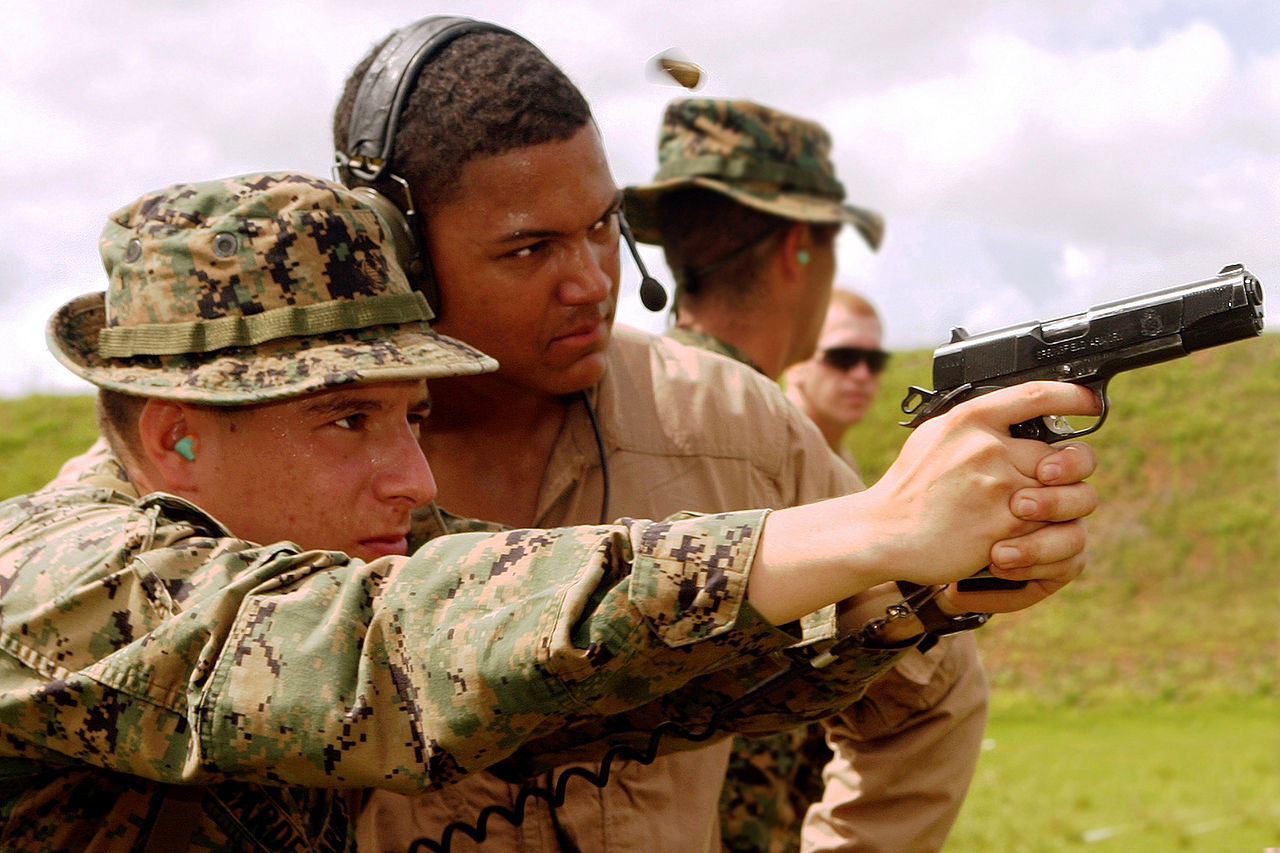
“The inventory of parts reads like a who’s who of the 1911 aftermarket business. In fact, the list is so diverse that it appears as if the Marines flipped through Brownells’ catalog and took one of everything,” according to an article about a new Marine Corps purchase of M1911 upgrade parts that American Handgunner published in 2002. “They started with 789 barrels, bushings, and link pins from Nowlin Manufacturing as well as 789 sear springs, ejectors, firing pin stops, mainspring housings, and mainsprings. From Springfield Armory the Leathernecks bought 789 slides and a corresponding number of hammers, sears, and disconnectors from Cylinder & Slide Shop.”
“Ed Brown Products got the nod for 789 beavertails and recoil spring guides while Novak’s .45 Shop received an order for 789 rear sights,” the article continued. “Wilson Combat is providing 789 extractors and mag release buttons and Kings Gun Works is selling 789 ambi[dextrous] thumb safeties.”
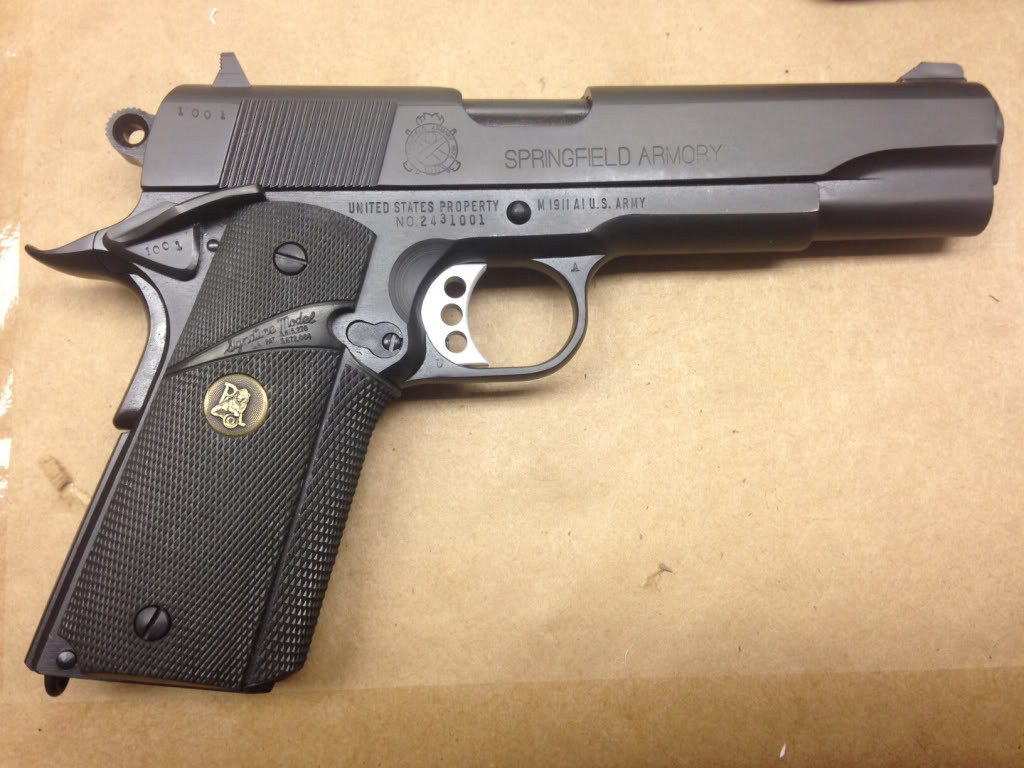
As the name indicates, the MEU(SOC) pistols were heavily tied to Marine units on deployments assigned to Marine Expeditionary Units. They also went to Force Reconnaissance companies and other specialized units.
Though effectively remanufactured and further upgraded as time went on, the MEU(SOC) pistols still eventually began to show their age. With M1911-series pistols increasingly found only in specialized units, maintenance and logistical challenges became particularly pronounced. The Marine Corps’ heavily modified M1911A1s had essentially become bespoke weapons that required experienced armorers to often hand-fit replacement parts to individual guns.
In the early 2000s, the Marine Corps purchased a relatively limited number of new-production .45 caliber pistols based on the M1911 from American gunmaker Kimber Manufacturing. These sidearms were for the new Marine Corps Special Operations Command, Detachment One, the service’s first unit assigned directly to U.S. Special Operations Command (SOCOM). That unit evolved into Marine Forces Special Operations Command (MARSOC).
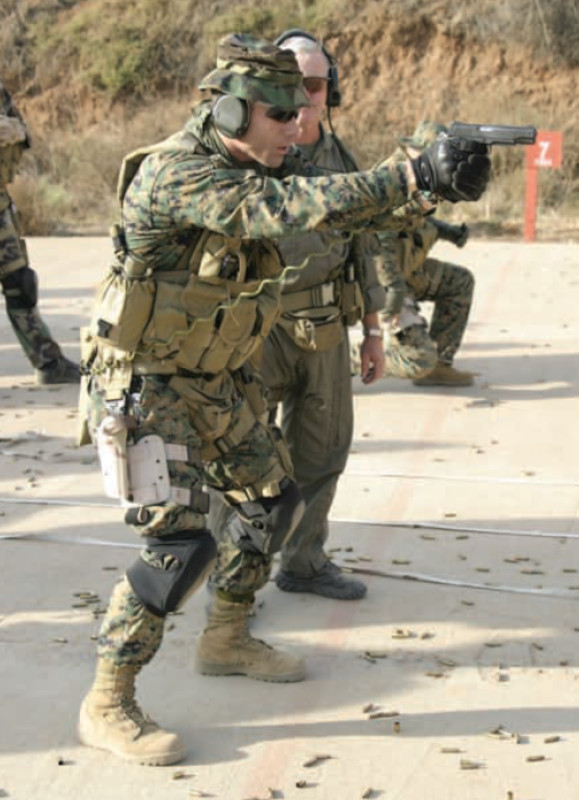
Those guns, known as the Interim Close Quarters Battle (ICBQ) pistol, featured custom stainless steel barrels, improved recoil system components, and a rail for attaching accessories like lights and aiming lasers on the underside of the front end of the frame. They also came with eight-round magazines. Standard M1911A1 magazines hold seven cartridges.
Interestingly, these ICQB pistols otherwise lacked a number of more significant upgrades that Kimber still offers, but were very similar to the previous MEU(SOC) configuration in their operation and to strip for maintenance as a result. Kimber subsequently began offering pistols with the same general configuration, dubbed the Warrior line, on the civilian market.
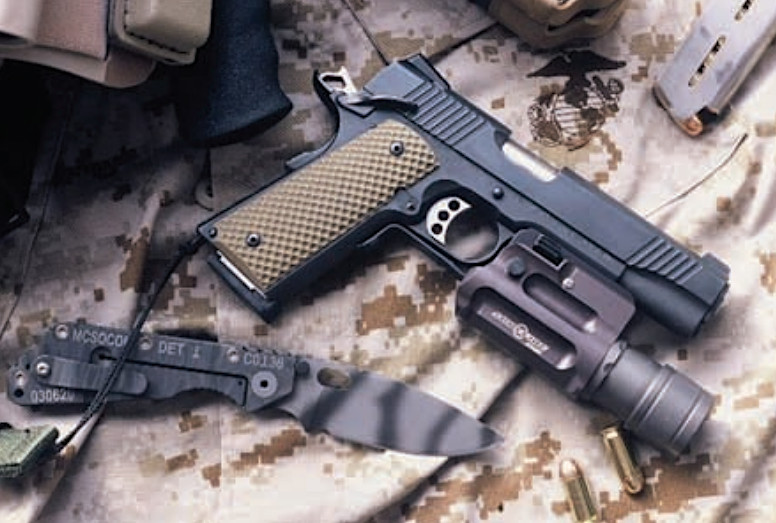
Around the same time as the acquisition of the Kimber ICBQ pistols, the Marines also began taking steps to acquire new production replacements for the rest of its MEU(SOC) pistols. This ultimately resulted in the selection of a new M1911 variant from Colt in 2012, which became the M45A1.
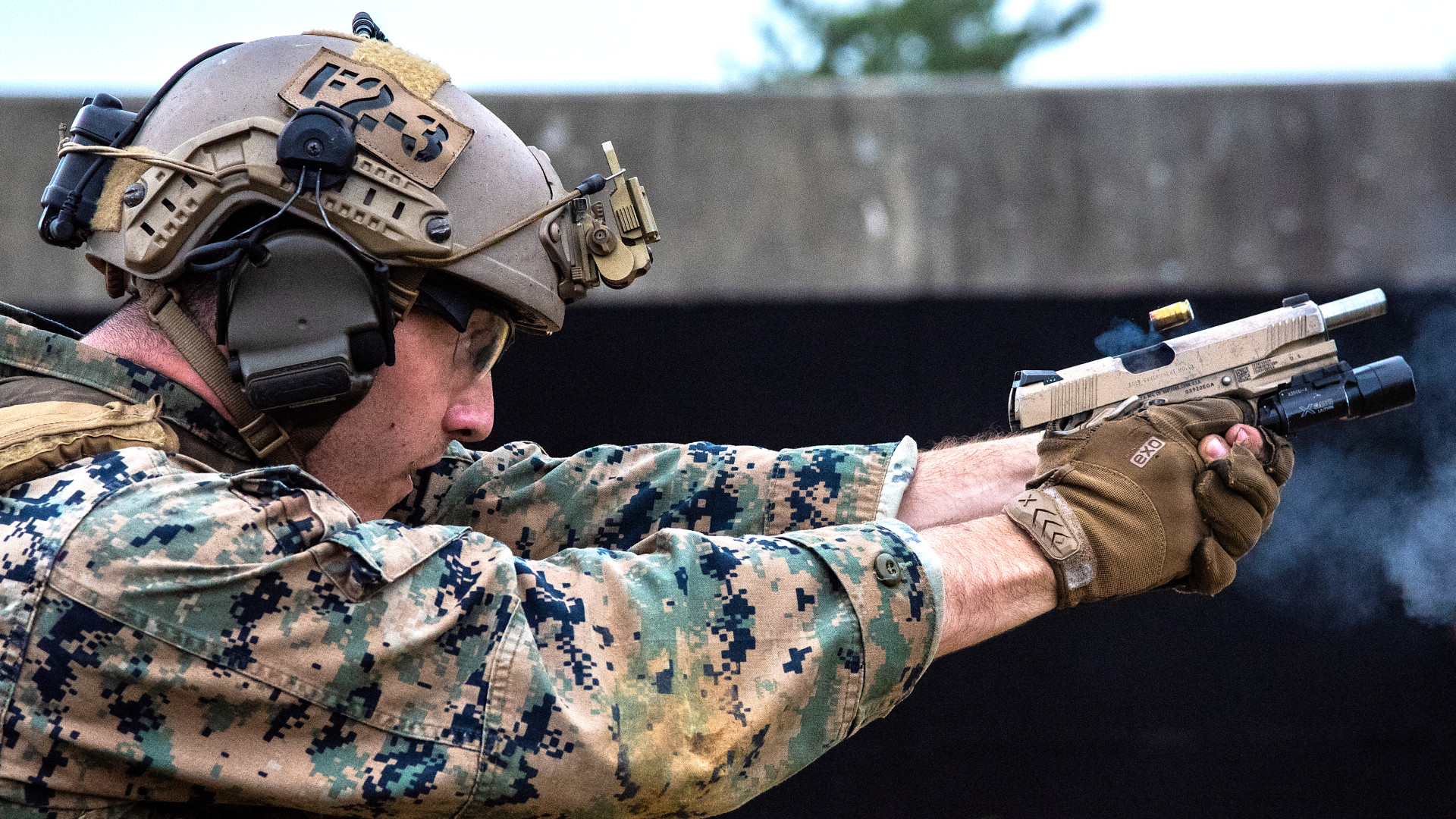
“The key new feature of the M45A1 is a dual recoil spring system (adapted from the Colt 10 mm pistol line) that spreads out the recoil force of the big .45 ACP rounds over a greater period of time,” according to a 2013 article from DefenseMediaNetwork. “In effect, by lowering the peak force of the recoil pulse, the apparent recoil force upon the user is greatly reduced, which increases accuracy overall.”

The M45A1s also featured improved triggers, ambidextrous safety levers, new grips, accessory rails, and rear sights with glow-in-the-dark tritium inserts to help with aiming at night. Initially, they also had a desert tan-colored finish from the company Cerakote, which was intended to help reduce corrosion and other wear. Corrosion, in particular, is a significant concern for any military force operating for protracted periods of time at sea.
However, the Marines found that the Cerakote finish, at least initially, was wearing off faster than expected and a number of M45A1s were ultimately returned to Colt. Those “decommissioned” guns were then resold on the commercial market and are now collector pieces. Long afterward, official Marine Corps photographs of personnel with M45A1s in service often showed them with heavily worn finishes. Colt eventually switched entirely to a different protective finish, called Decobond, with a browner color, for the M45A1.
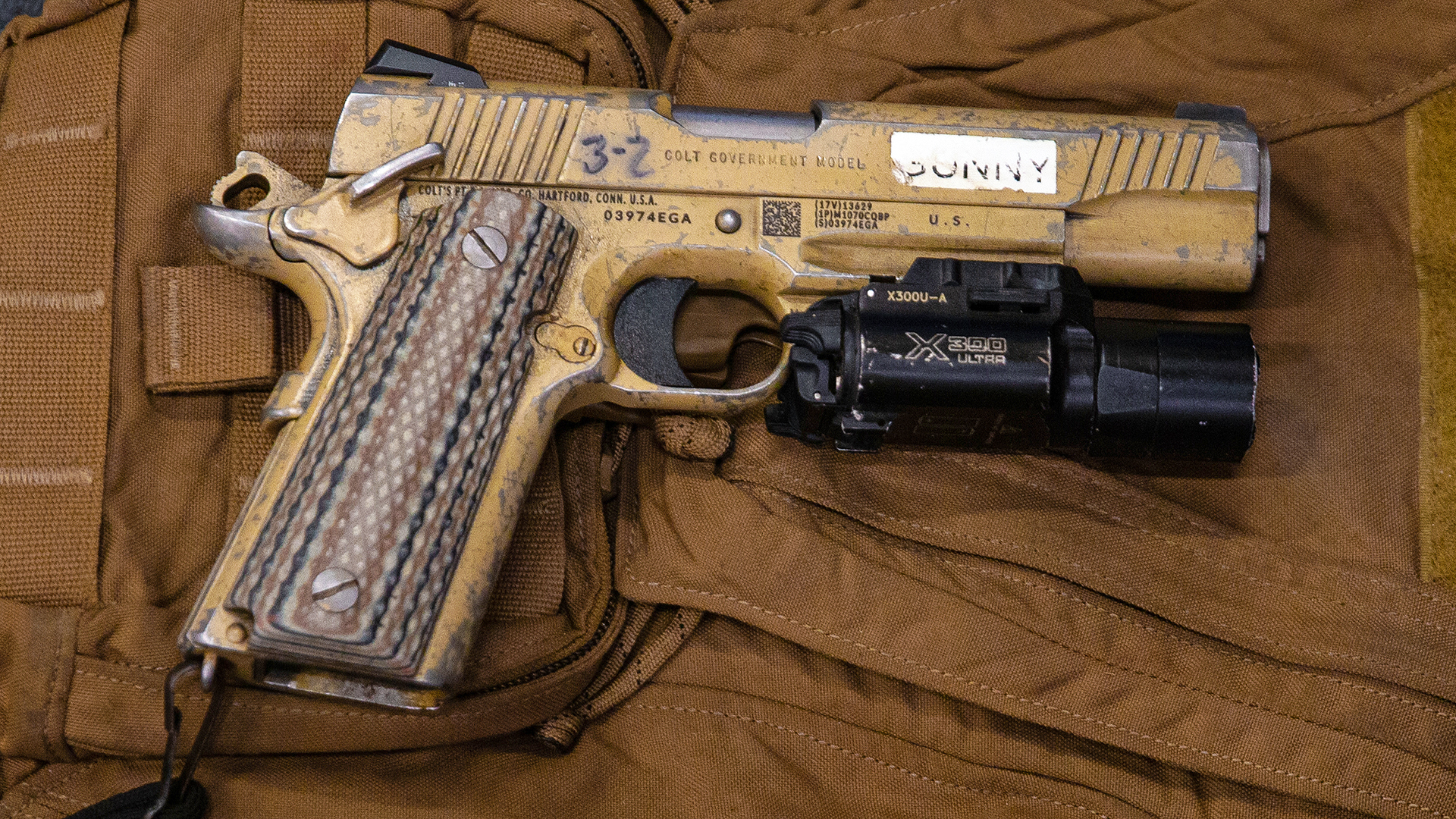
Over the years, the Marine Corps’ persistence in issuing M1911-series pistols has become another part of the service’s already often unique history and heritage. At the same time, even before the decision to replace the last M45A1s with M18s, it had become increasingly clear that this particular chapter was coming to an end. MARSOC had already begun replacing its M45A1s in 2016, switching to Glock variants, which have increasingly become the default for much of the U.S. special operations community.
As already noted, heavily modified M1911 variants continue to see at least some service with other U.S. special operations units, particularly the U.S. Army’s Delta Force. In 2019, now-retired U.S. Army General Scott Miller, then the top American commander in Afghanistan, was spotted carrying what appeared to be one of Delta’s custom M1911 versions. Miller had served with Delta Force in the 1990s and early 2000s.
The SEALs also continue to be notable users of other pistols chambered in the .45 caliber cartridge. This began in the 1990s with their adoption of the Heckler and Koch Mk 23 Mod 0, which is notably large for a handgun. In 2010, they began issuing a version of the significantly smaller Heckler and Koch HK45C designated the Mk 24 Mod 0.
When exactly the U.S. military, as a whole, will stop issuing M1911-series pistols completely remains to be seen. Only time will tell whether the Marine M45A1s now in storage might make their way to other U.S. or foreign military or law enforcement users, or even the civilian market through things like the U.S. government’s Civilian Marksmanship Program (CMP).
What is clear is that the Marine Corps’ time as the last major user of M1911 variants within the U.S. military has finally come to an end.
Contact the author: joe@thedrive.com
